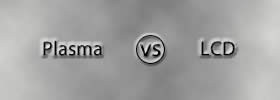Difference between Island and Continent
Key Difference: Merriam-Webster Dictionary defines an island as, “a tract of land surrounded by water and smaller than a continent.” The Myth of Continents: a Critique of Metageography states, “Continents are understood to be large, continuous, discrete masses of land, ideally separated by expanses of water.” Continents are also defined due to its placement and that they sit on continental lithosphere which is part of tectonic plates floating high on Earth's molten mantle.
A map or a globe generally shows land and the different bodies of water that surround it on Earth. Though almost everyone knows there are six or seven continents, and various little islands, there is no strict definition that can be used to set the two apart. A number of resources list the difference as size, smaller ones are island and larger ones are continents, while this is true, it is not the only difference. For example, Australia can be considered as an island as well as a continent.

Merriam-Webster Dictionary defines an island as, “a tract of land surrounded by water and smaller than a continent.” While this definition is correct, it is limited and does not contain any other distinguishing factors of an island. Small pieces of land that emerge and are surrounded by water can be known as islet, skerries, cays or keys. Islands can also be a large span of land. Islands are most commonly found in groups and these groups of geographically or geologically related islands are called an archipelago. The term ‘island’ is derived from Middle English ‘iland’ and Old English ‘igland’, both meaning ‘water + land’.
Islands can form in various ways and they are classified depending on how they were formed. The different types of islands are continental, oceanic, volcanic oceanic, tropical and desert. Continental islands, such as Greenland and Long Island, are islands that are a part of a continental shelf and are commonly formed as a result of drifting. Oceanic islands, such as Macquarie Island and Saint Peter, are formed from the shifting of tectonic plates. When tectonic plates shift and slide under each other, they raise the ocean floor above the water level and create an island. Volcanic oceanic islands are formed as a byproduct of volcanic eruptions that are caused by tectonic shifts. Tropical islands, such as Maldives, Tonga, Sri Lanka, Hawaii, etc, are more tropical in nature, earning them the name and are mostly used as tourist attractions. There are approximately 45,000 tropical islands. A desert island is used to refer to islands that are inhabited.
Islands can also be created artificially by humans due the availability of vast technology in today’s world. These are known as ‘Artificial islands’ and can be created by using natural material, such as sand and sediments or artificial materials, such as concrete slabs or recycled waste. Dubai’s Palm Islands is the most popular example of an artificial island. Due to the dynamic nature of islands, an exact number of islands cannot be stated. There are approximately 18,995 known islands in the world today. Islands could be a country in itself that is self governed or a group of them could fall under a country or continent.

A continent is one of several large landmasses on the Earth. There are a total of seven continents; North America, South America, Europe, Asia, Antarctica, Australia and Africa. In some places, Europe and Asia is termed as one continent, named as Eurasia, making it six continents. In other places, North America and South America are also named singularly as the Americas. The Myth of Continents: a Critique of Metageography states, “Continents are understood to be large, continuous, discrete masses of land, ideally separated by expanses of water.” However, many of the seven most commonly recognized continents identified by convention are not discrete landmasses separated by water. The term ‘continent’ is translated from the Latin ‘terra continens’, meaning ‘continuous or connected land’.
Geologists define the term ‘continents’ differently compared to geographers, suggesting a continent is defined by continental crust: a platform of metamorphic and igneous rock, largely of granitic composition. Some geologists restrict the term to portions of the crust built around stable Precambrian "shield", called a craton. The craton is an increasing complex of ancient mountain belts that are formed from earlier tectonic activity and continental collisions. According to geologists, the border of a continent does not have to be a body of water. Continents are also defined due to its placement and that they sit on continental lithosphere which is part of tectonic plates floating high on Earth's molten mantle.
Prior to the all the continents separating, there was one joint piece of land that was known as Pangaea. Due to continental drifting caused by the shifting of the tectonic plates, the continents are what we have now. Continents are a large mass of land, which can be a country in itself, such as Australia and North America, or it can comprise various different countries such as Europe. Continents can also be separated by countries with respect to physical and political borders.
While, continents sit on their own tectonic plates, islands can be on a tectonic plate or sit between plates. Continents also differ from island as they have various different cultures and life forms such as flora and fauna. Islands may be limited to have only a few different types of native plants and animals, and cultures. Due to its large size, continents encompass a number of different cultures and religions. Unlike, islands which can be man-made, continents cannot be created artificially, solely because of its large size.
|
|
Island |
Continent |
|
Definition |
An Island is a piece of land which is smaller than a continent and is surrounded by water on all four sides |
A continent is a larger landmass that is inhabited by local flora and fauna and sits on its own tectonic plate |
|
Size |
Can vary depending on land region and formation; the biggest island is Greenland |
Continents are usually bigger in size, the smallest continent is Australia |
|
Etymology |
Middle English ‘iland’; Old English ‘igland’ |
Latin word ‘terra continens’ meaning “continuous tract of land” |
|
Types |
Continental, Oceanic, Tropical, Desert |
All seven continents differ in characteristics, no two continents are the same |
|
Surrounded by water |
Islands are surrounded by water on all four sides |
Continents are also surrounded by water, though they are divided by oceans |
|
Can be accessed by |
Water or Air |
Land, water or air |
|
Formation |
Islands can form in various ways. They can form by drifting away from mainland, or due to shifting of tectonic plates which causes the ocean floor to rise. They can also be created artificially by natural or man-made materials |
Continents have formed through a process which is known as the continental drift, in which tectonic plates under the different continents shifted causing the seven different continents to drift apart |
|
Single or grouped |
Islands, most commonly, are in small groups |
Continents depending on its location could be single or in groups, Asia and Europe are considered to be grouped together and is referred to as Eurasia in some countries |
|
Inhabitation |
Islands can be inhabited or deserted |
Continents are habited by local flora and fauna |
|
Natural or Artificial |
Can be natural or artificial, numerous islands are man-made |
Natural, cannot be artificial |
Image Courtesy: e-architect.co.uk, ed101.bu.edu









Comments
Becky
Wed, 12/20/2017 - 07:37
This was really helpful.
Aradhya
Sat, 04/05/2014 - 17:23
Add new comment